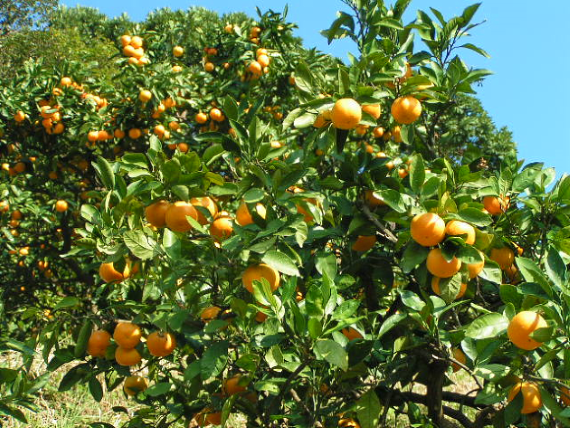Ume flowers bloom in February. Bees fry about to collect nectar. These
bees not only collect nectar, but also do an important job, carrying the
pollen from flower to flower. Famers talk about how bees fly about on the
day in February. There is such a greeting that farmers have on each season.
Here in Tanabe-city is the most producing area of Nanko-Ume. People make mainly Nanko-Ume for Ume-boshi, Gojiro Ume for Ume-syu, and Mk14 and Koume. At the same time the sun rises with morning dew, farmers start harvesting Ume at the field.
It’s nice to see Ume flowers, and fun to have Nanko-Ume picking experience and making Ume syrup experience.
Ume field in Akizuno in late February.
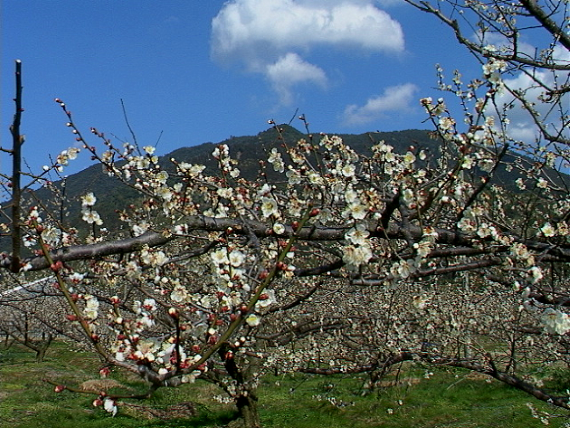
Nako-ume is representative of Wakayama and this is Ume at the harvest time
in June.
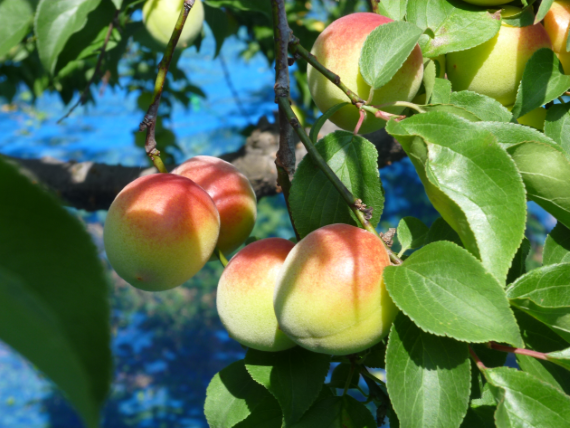
Tanabe Ishigami Bairin (Ume Grove)
To enjoy Ishigami Bairin in Haya area, it take about 20 minutes by car
from Akizuno Garten. Ishigami Bairin at an altitude of 300m opens as sightseeing
Bairin from February to March every year. It is said that you can see 300
thousand trees at a glance, and the view of combination with Ume trees,
mountain and ocean is like an arcadia. There are various events every year.
Please ask about details to Tanabe Tourism Association. TEL : 0739-26-9929
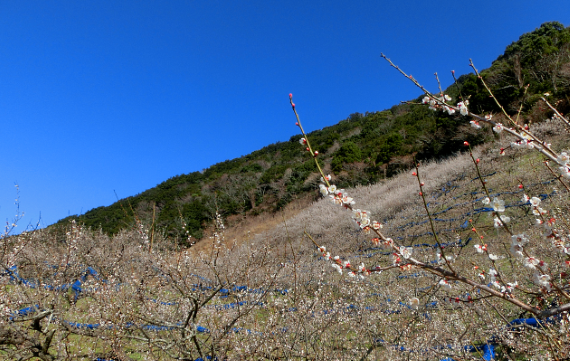
Ishigami Bairin (by Tanabe Tourism Association)
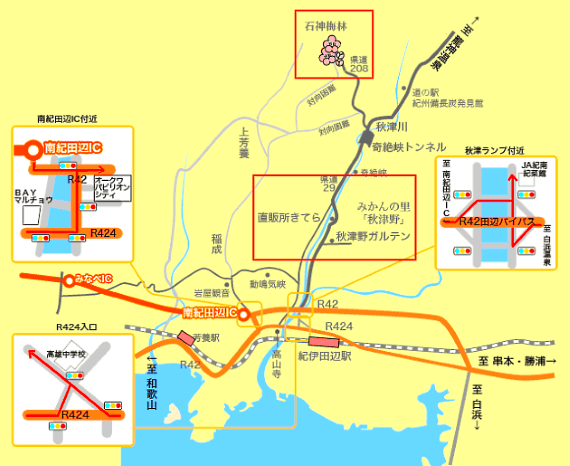
Would you like to learn about Kisyu Bincyo-tan; high-grade charcoal produced from Ubame oak.
Kisyu Bincho-tan Charcoal Memorial Park Museum
Bincho-tan Charcoal has been handed down for over three centuries. At the birth place, it reveals the whole picture.
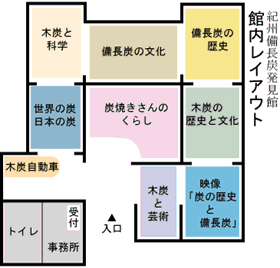
There was already charcoal when human being began to use the fire. The left thing after a wood fire was the beginning of charcoal. And it is the fuel that human being has used for the longest time. By using charcoal, human being has made a lot of things including Iron. And they also knew that charcoal can be used not only as fuel, but also as water purification material and humidity control material.
At Kisyu Bincho-tan Charcoal Memorial Park Museum, it shows a history and culture of charcoal and explains kinds and how to use charcoal. In addition, you can actually see how to make Bincho-tan charcoal in charcoal kiln inside the park, and it makes you understand more about charcoal.
It takes about 15 minutes by car from Akizuno Garten. Also you can take
a line bus to get there. 。
Address : 1491 Akizugawa Tanabe-city
Phone Number : 0739-36-0226
Open : A.M. 9:00 to P.M. 5:00 (April to November)
A.M. 9:00 to P.M. 4:00 (December to March)
Admission Fee :
Individual general 210 yen students 100 yen (under 6 years old is free)
Group (over 20 people) general 170 yen students 70 yen



